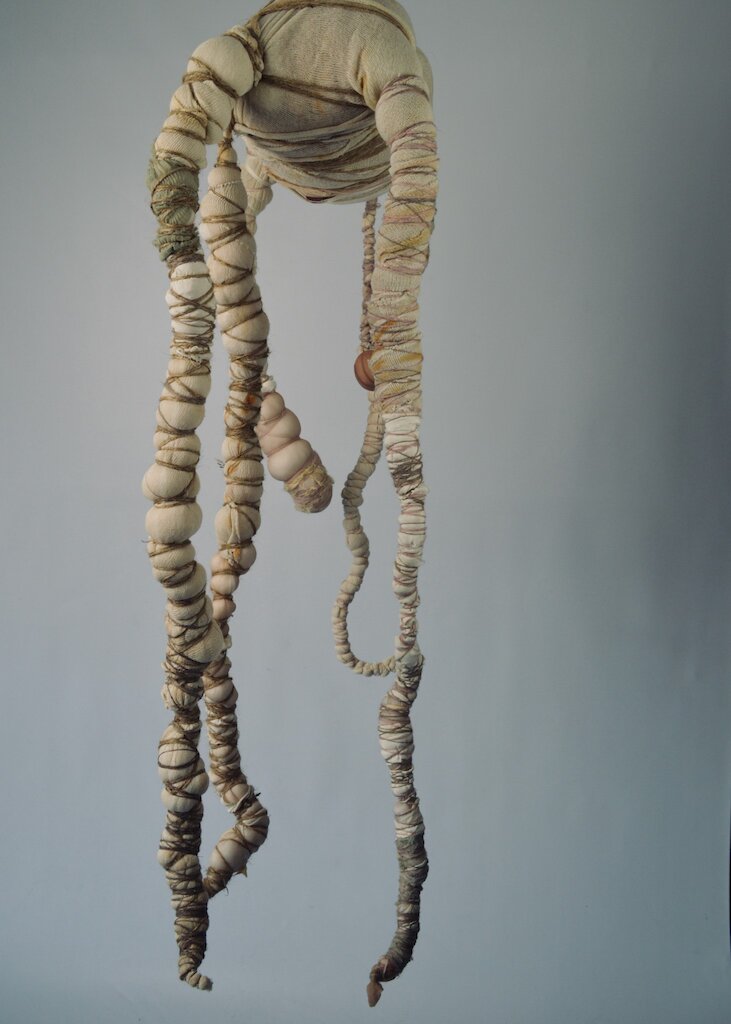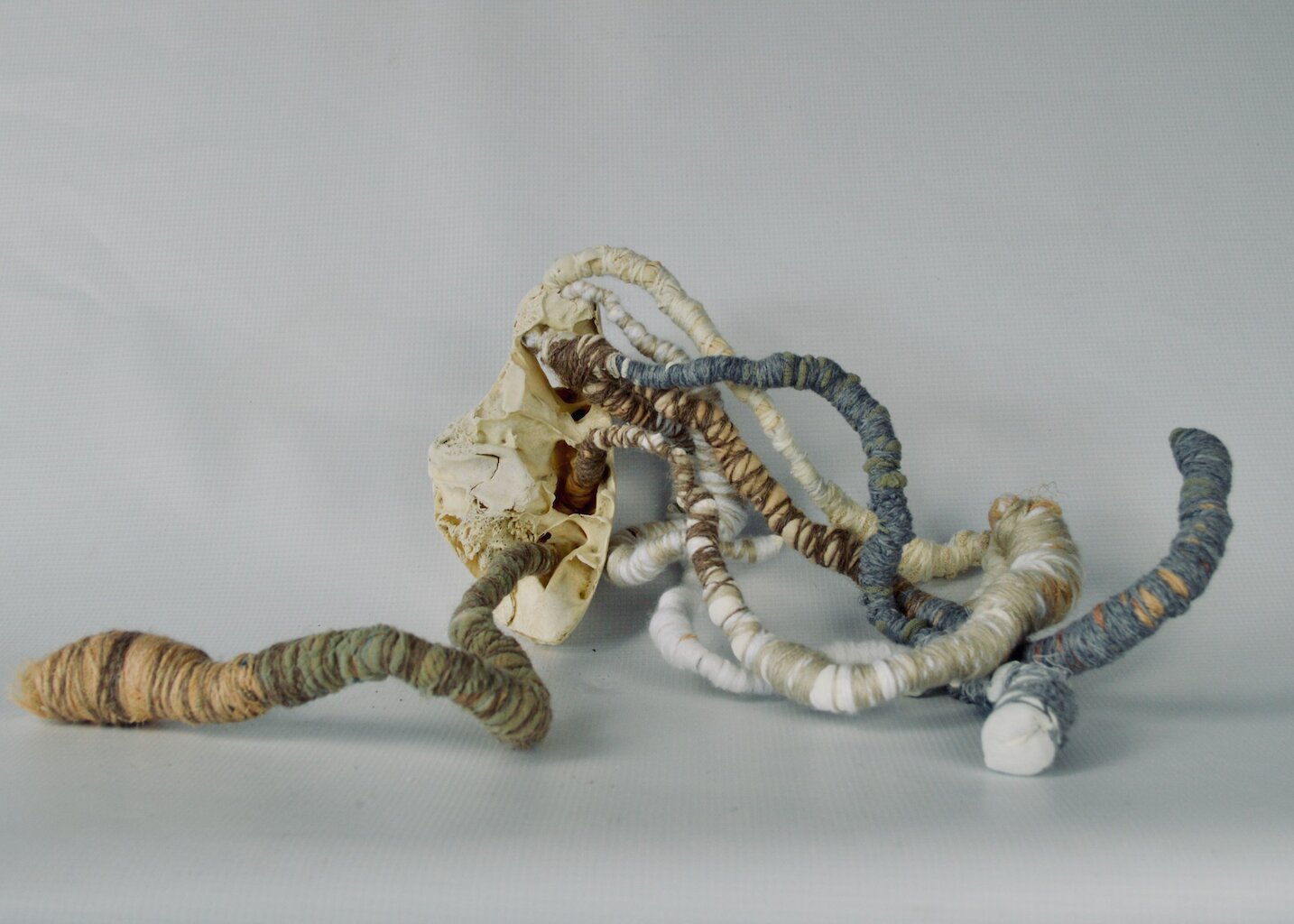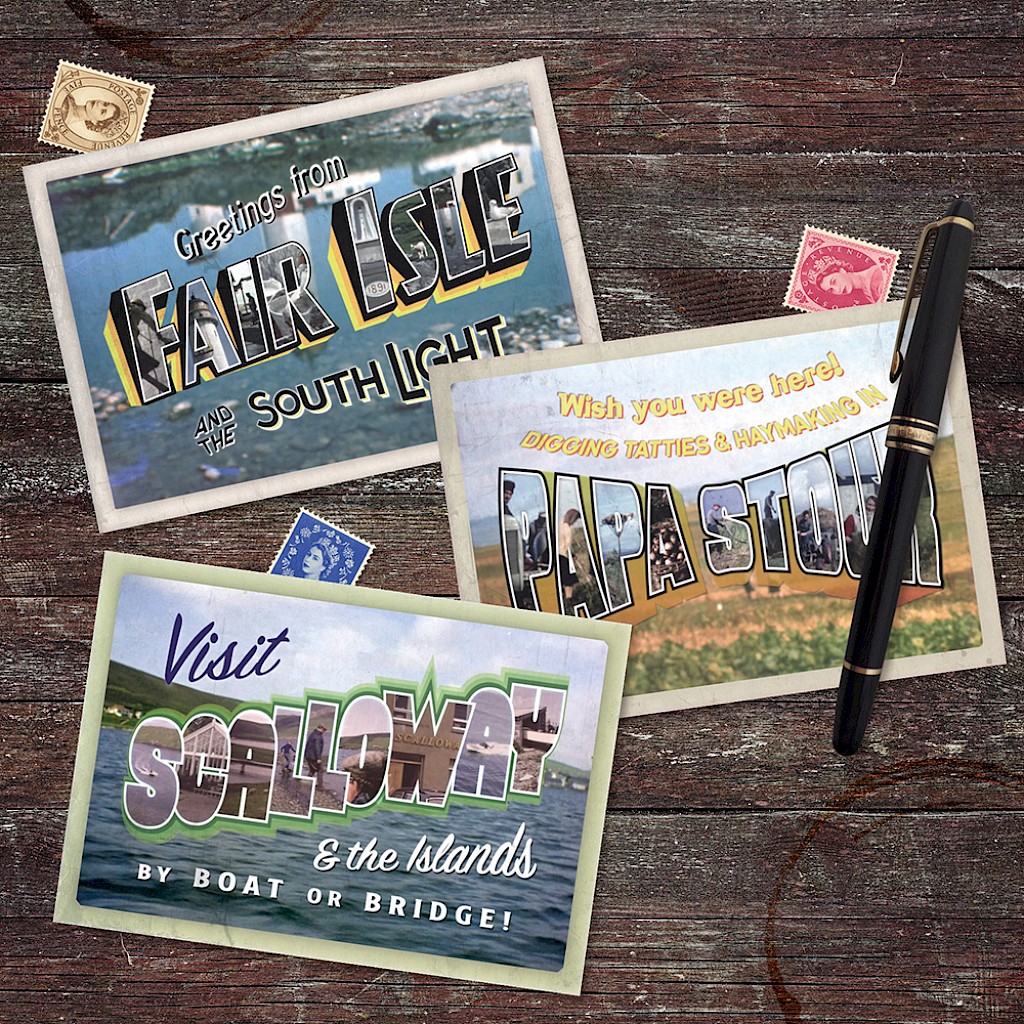'Lipperin' is a Shetland dialect word meaning to be full to overflowing and what we see here is the lipperin ower of creativity and ideas.
- Date(s)
- 26 Mar - 1 May 2022
- Venue
- Bonhoga
- Partner
- Shetland UHI
The BA (Hons) Fine Art Degree Course at Shetland college is designed to help students find their individual creative voice whilst simultaneously equipping them to become professional independent artists. Created as part of a third-year Professional Practice module, this exhibition allows students to take the lead in all aspects of organisation, curation and publicity to gain experience in some of the key skills of being an artist. The exhibition is supported by Shetland Arts.
Shetland's landscape, culture and history flows through all their work but each student has a distinct intent and style embracing various mediums and approaches. What is shared by all is an exploration of identity and belonging; encouraging us to ask questions and perhaps to see our world in different ways.
Elaine Thomason's inspiration comes from the hills of North Yell. Looking to the past and present as well as to what the future might hold for the vulnerable, rugged landscape, birds and wildlife. The use of re-cycled materials is central to her practice and her work covers a range of media including printmaking, painting and found object sculpture. She is interested in exploring the interrelationship of natural resources, ecology, mythologies and the industry of the hill as well as the social history in this ever-changing environment.
Cilla Robertson enjoys experimentation and the use of different approaches to create images that suit her chosen medium. She finds inspiration in place, colour, music, sea, land and sound; and a recuring theme is her local history, family and the Shetland dialect. She would like to help preserve the dialect, particularly because when she was at school, the bairns were encouraged to speak English instead of their local tongue. Many beautiful, expressive Shetland words and meanings have been lost. The exhibition pieces were inspired by an old photo, possibly by J. D. Ratter and the poem People by Yevgeny Yevtushenko.
Susan Pearson works instinctively exploring identity and memory through drawing, painting, print and sculpture. Her inspiration comes from the shapes, colours and forms found in the human body and in nature. These forms create stories and meanings that merge and change within her art.
Jane Ridland draws inspiration from everyday experiences and surroundings. Her current work is in response to the shapes, colours and textures of lichen clad stones.
Images: 'Found Object', mixed media, Susan Pearson





